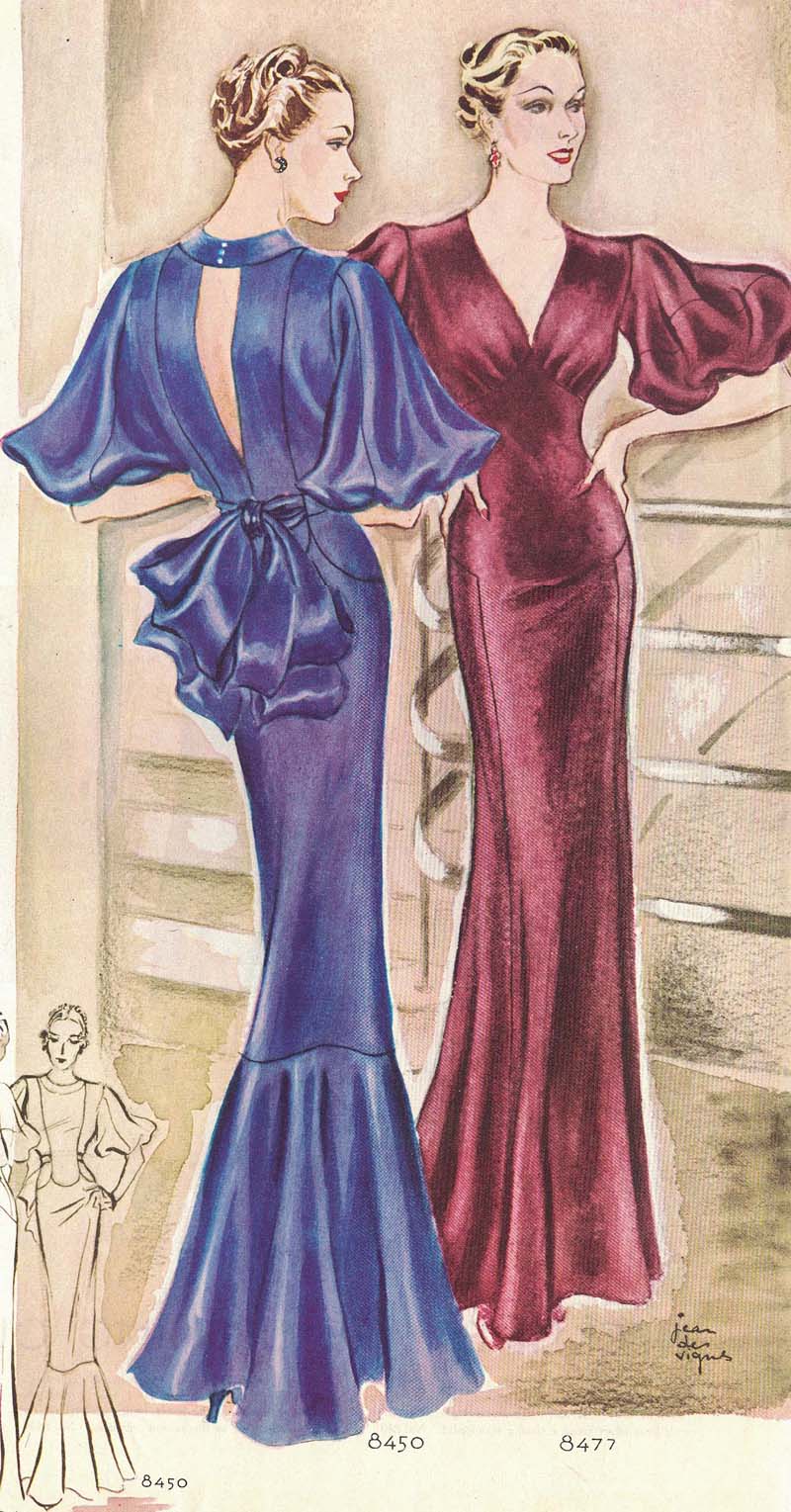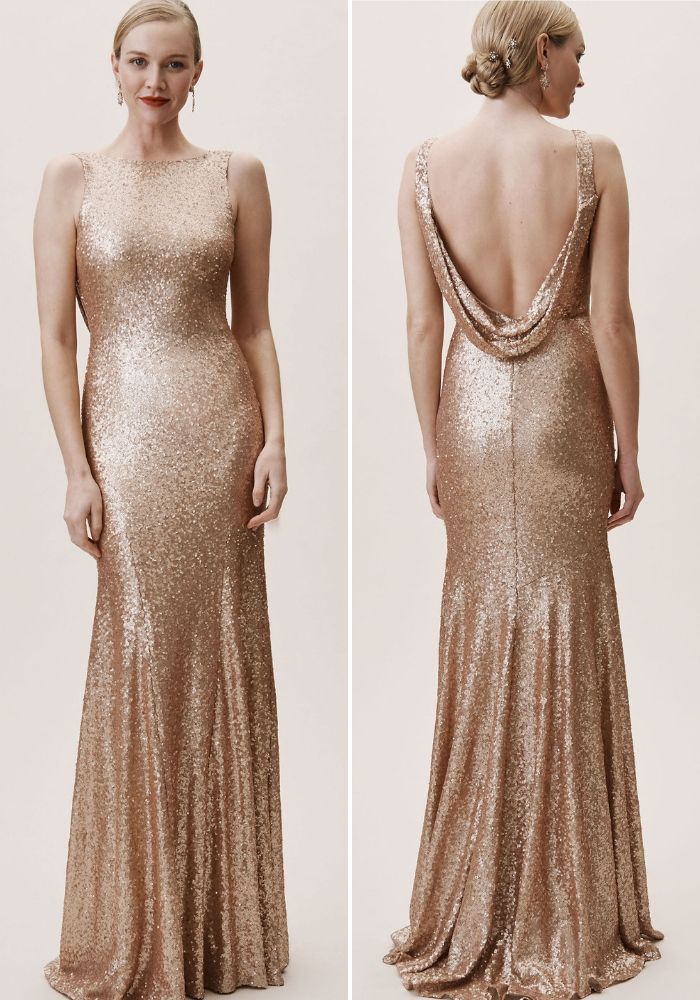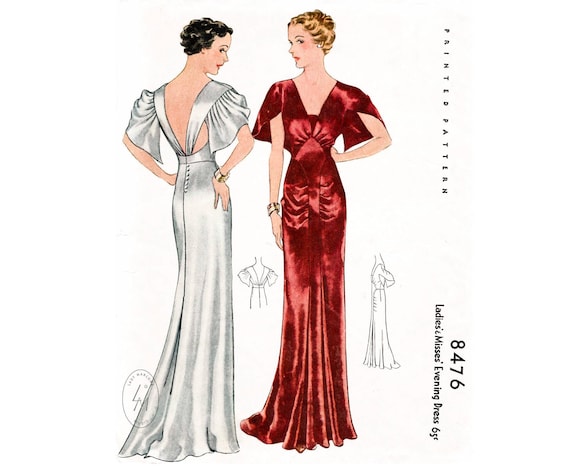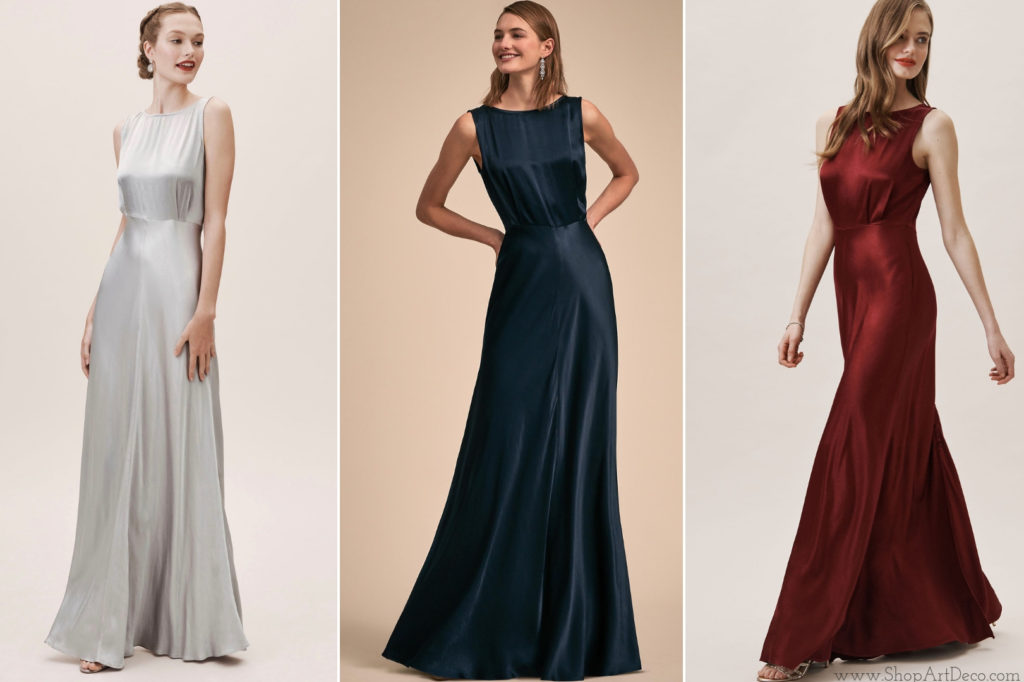### Fabric Choices
- **Silk**: Silk was a popular choice for more luxurious garments, giving them a shiny, flowing look.
- **Satin**: Satin was favored for its smooth finish and lustrous sheen, perfect for evening wear.
- **Chiffon**: Lightweight and sheer, chiffon added a delicate and ethereal quality to formal dresses.
- **Velvet**: Often used in winter, velvet added depth and texture to evening attire.
### Silhouette and Cut
- **Bias Cut**: This technique, which involves cutting fabric at a 45-degree angle, allowed dresses to cling softly to the body, emphasizing the natural curves of the woman’s figure.
- **Long Lengths**: Hemlines were typically floor-length, contributing to the elegant and formal look.
- **Sleeves and Necklines**: Dresses often featured high necklines and long or puffed sleeves, although sleeveless styles were also popular for evening wear. Backless designs were particularly in vogue, adding an element of surprise and allure.
### Design Elements
- **Ruching and Draping**: Gathers of fabric were often used to create texture and emphasize certain parts of the body, such as the waist or hips.
- **Bows and Floral Accents**: Decorative elements like bows or flowers were sometimes added to gowns, often at the neckline or waist, to enhance femininity.
- **Art Deco Motifs**: Influences from the Art Deco movement were visible in geometric patterns and angular designs used in the detailing of dresses.
### Colors and Patterns
- **Solid, Rich Colors**: Popular colors included deep reds, blues, greens, and purples. Black was also a staple for formal evening wear.
- **Metallics**: Gold and silver tones were popular, especially for accents and trims.
### Accessories
- **Shawls and Fur Stoles**: These were often draped over the shoulders for added warmth and luxury.
- **Gloves**: Long gloves, typically reaching past the elbow, were considered essential for formal occasions.
- **Jewelry**: Pearls and diamonds were favored for their classic elegance. Art Deco-style jewelry with its distinctive geometric shapes also complemented the evening wear.
### Hair and Makeup
- **Soft Waves**: Hair was often styled into gentle waves, parted to the side, with some styles featuring tight curls framing the face.
- **Bold Lipstick**: Lip colors like deep reds and maroons were popular, contrasting with the more natural makeup on the rest of the face.
Formal dresses from the 1930s reflected the glamour and resilience of the era, combining elegance with innovative designs that emphasized the natural beauty of the wearer’s figure. These dresses remain a symbol of classic style and continue to inspire fashion designers today.

1927 × 1280
Source:https://mediakron.bc.edu/fashiondecor/contents/anxiety-and-escapism-1930s-40s-usa/womens-fashion-1930s-40s/evening-wear-1930-1940s-women/evening-dresses-back-interest

1529 × 800
Source:https://fashionhistory.fitnyc.edu/1930-1939/

1000 × 700
Source:https://www.decoweddings.com/40367/1930s-evening-gowns-vintage-inspired/

470 × 570
Source:https://www.etsy.com/dk-en/listing/1008039327/vintage-sewing-pattern-1930s-evening

968 × 540
Source:https://www.pinterest.com/pin/704320829217293963/

500 × 417
Source:https://witness2fashion.wordpress.com/tag/evening-dress-1930s/

1101 × 648
Source:https://www.pinterest.com/pin/1930s-evening-dress-art-deco-gown-party-dress--704320829217293985/

700 × 477
Source:https://thequintessentialclothespen.com/2017/09/18/a-dramatic-1933-evening-gown/

654 × 430
Source:https://vintagehandbook.wordpress.com/2014/04/10/modern-interpretations-of-1930s-fashion/

682 × 1024
Source:https://www.decoweddings.com/40367/1930s-evening-gowns-vintage-inspired/
